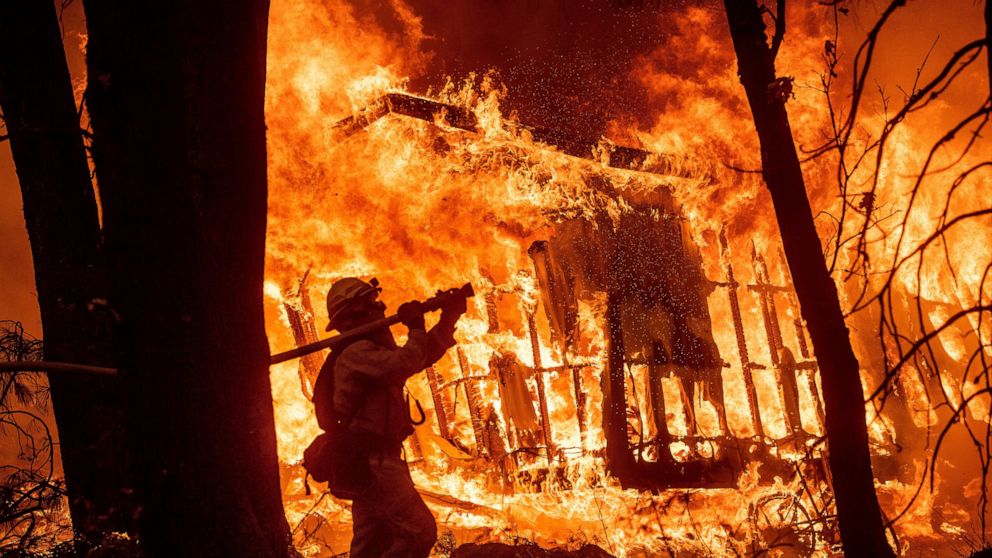
Officials were struggling Wednesday to find ways for homeowners to afford insurance in fire-prone areas of California and for utilities to survive liability from devastating wildfires that threaten to worsen with climate change.
One option on the table is the creation of a new state catastrophe fund backed by tens of billions of dollars.
Massively expensive wildfires in 2017 and 2018 partly prompted Pacific Gas & Electric Corp . to file for bankruptcy protection and led to the creation of a five-member board that is considering who should pay for increasingly destructive wildfires.
Board members have until July 1 to make their recommendations. Gov. Gavin Newsom plans to outline his plan to address the problem by mid-April.
California’s recent past “is fraught with wildfires,” Chief Deputy Insurance Commissioner Joel Laucher told board members during a meeting in Santa Rosa, where a working class neighborhood was destroyed by wildfires in 2017. “This is the world that insurers are looking at.”
The danger is making it harder for people to get or afford home insurance, frustrating residents who may have moved decades ago to rural areas in search of cheaper housing in a natural setting.
Courts and regulators have piled the financial burden of the fires on utilities, leading Moody’s Investors Service to downgrade credit ratings for California’s three big investor-owned utilities.
Courts have ruled that utilities are entirely liable for damage caused by their equipment, even if they followed all safety precautions. Regulators, meanwhile, have saddled utility investors with the legal burden for fires caused by mismanagement of electrical equipment.
Moody’s on Wednesday issued a report analyzing several possible remedies, including the creation of a state catastrophe fund that it says seems to be the most likely outcome.
Creation of a fund “appears to be the reform that is most likely to happen,” Moody’s said in its analysis. Republican Assemblyman Chad Mayes of Yucca Valley has proposed a wildfire liability insurance fund.
A fund could help stabilize utilities, but the extent of the help depends on “unresolved questions” including the size of the fund and how it addresses wildfire costs, Moody’s said.
Negotiators currently appear to be discussing a fund in the range of $15 billion to $30 billion, Moody’s said, adding a larger fund could protect against more fires but could push higher costs onto customers.
Under Mayes’ bill, public electric utilities as well as investor-owned utilities such as PG&E could participate by paying in money from customers and shareholders. They would be reimbursed for wildfire costs at levels set by state regulators who could consider the extent to which utilities acted properly.
The fund managers could also issue bonds secured by fund contributions to help pay wildfire costs.
Rolling the cost to utility customers, Moody’s said, also raises the question of balancing the interests of customers who live in fire-prone areas with those in lower-risk areas.
“We must map out longer-term strategies, not just for the utilities’ future, but for California’s energy future, to ensure that the cost of climate change doesn’t fall on those least able to afford it,” Newsom warned in his State of the State speech in January.
He convened a “strike team” of financial, bankruptcy and energy experts and hired Guggenheim Partners and the Los Angeles-based O’Melveny law firm to advise him on the proposals he is set to announce in mid-April.
California’s wildfire risk is so great now that even risk pools or catastrophe bonds aren’t attractive to investors, warned Carolyn Kousky, executive director of the Wharton Risk Management and Decision Processes Center at the University of Pennsylvania.
“It’s not like there’s one silver bullet here that’s going to solve the problem,” she told board members.
———
Associated Press writer Kathleen Ronayne contributed to this story





